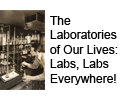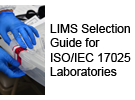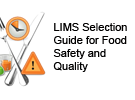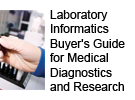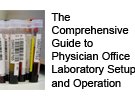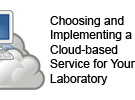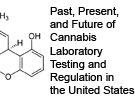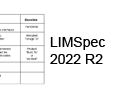Journal:Laboratory testing for coronavirus disease (COVID-19) in suspected human cases
| Full article title | Laboratory testing for coronavirus disease (COVID-19) in suspected human cases |
|---|---|
| Author(s) |
World Health Organization; Leitmeyer, Katrin; Zambon, Maria; Drosten, Christian; Koopmans, Marion; Poon, Leo; Gao, George; Nahapetyan, Karen; Inbanathan, Francis; Pereyaslov, Dmitriy; Uhlenhaut, Christine; Grabovac, Varja; Vandemaele, Katelijn; Samaan, Magdi; Fuster, Christian; Zhang, Wenqing; Stevens, Lisa; Oxenford, Chris; Cognat, Sebastian; Kojima, Kazunobu; Dolea, Carmen; Brown, Caroline; Barnadas, Céline; Van Kerkhove, Maria; Carter, Lisa; Perkins, Mark D.; von Eije, Karin |
| Author affiliation(s) |
European Center for Disease Control, Public Health England, Charité - Universitätsmedizin Berlin, Erasmus University Medical Center, Hong Kong University, Chinese Center for Disease Control and Prevention, World Health Organization |
| Primary contact | Email: WHElab at who dot int |
| Year published | 2020 |
| Volume and issue | 2020.5 |
| Page(s) | 1–7 |
| Distribution license | Attribution-NonCommercial-ShareAlike 3.0 IGO |
| Website | https://apps.who.int/iris/handle/10665/331501 |
| Download | https://apps.who.int/iris/bitstream/handle/10665/331501/WHO-COVID-19-laboratory-2020.5-eng.pdf (PDF) |
|
|
This article should be considered a work in progress and incomplete. Consider this article incomplete until this notice is removed. |
Background
This document provides interim guidance to laboratories and stakeholders involved in COVID-19 virus laboratory testing of patients. It is based in part on the interim guidance on laboratory testing for Middle East Respiratory Syndrome (MERS) coronavirus.[1][2][3][4][5][6] Information on human infection with the COVID-19 virus is evolving and WHO continues to monitor developments and revise recommendations as necessary. This document will be revised as new information becomes available. Feedback is welcome and can be sent to WHElab@who.int.
The virus has now been named SARS-CoV-2 by the International Committee of Taxonomy of Viruses (ICTV)(2).[7] This virus can cause the disease named coronavirus disease 2019 (COVID-19). WHO refers to the virus as COVID-19 virus in its current documentation.
Laboratory testing guiding pricinciples for patients who meet the suspect case definition
The decision to test should be based on clinical and epidemiological factors and linked to an assessment of the likelihood of infection. Polymerese chain reaction (PCR) testing of asymptomatic or mildly symptomatic contacts can be considered in the assessment of individuals who have had contact with a COVID-19 case. Screening protocols should be adapted to the local situation. The case definitions are being regularly reviewed and updated as new information becomes available. For the WHO suspected case definition see Global surveillance for COVID-19 caused by human infection with COVID-19 virus.[8]
Rapid collection and testing of appropriate specimens from patients meeting the suspected case definition for COVID-19 is a priority for clinical management and outbreak control and should be guided by a laboratory expert. Suspected cases should be screened for the virus with nucleic acid amplification tests (NAAT), such as Reverse transcription polymerase chain reaction (RT-PCR).
References
- ↑ World Health Organization (January 2018). "Laboratory testing for Middle East Respiratory Syndrome coronavirus, interim guidance (revised), January 2018". WHO/MERS/LAB/15.1/Rev1/2018. World Health Organization. https://www.who.int/csr/disease/coronavirus_infections/mers-laboratory-testing/en/.
- ↑ World Health Organization (2018). Managing epidemics: Key facts about major deadly diseases. World Health Organization. pp. 257. ISBN 9789241565530. https://apps.who.int/iris/handle/10665/272442.
- ↑ World Health Organization (2011). WHO Global Influenza Surveillance Network: Manual for the laboratory diagnosis and virological surveillance of influenza. World Health Organization. pp. 140. ISBN 9789241548090. https://apps.who.int/iris/handle/10665/44518.
- ↑ World Health Organization (October 2018). "Protocol to investigate non-seasonal influenza and other emerging acute respiratory diseases". WHO/WHE/IHM/GIP/2018.2. World Health Organization. https://www.who.int/influenza/resources/publications/outbreak_investigation_protocol/en/.
- ↑ World Health Organization (October 1999). "WHO Recommended Surveillance Standards, Second Edition". WHO/CDS/CSR/ISR/99.2. World Health Organization. https://apps.who.int/iris/handle/10665/65517.
- ↑ World Health Organization (2000). "Guidelines for the Collection of Clinical Specimens During Field Investigation of Outbreaks". WHO/CDS/CSR/EDC/2000.4. World Health Organization. https://apps.who.int/iris/handle/10665/66348.
- ↑ Gorbalenya, A.E.; Baker, S.C.; Baric, R.S. et al. (2020). "Severe acute respiratory syndrome-related coronavirus: The species and its viruses – A statement of the Coronavirus Study Group". bioRxiv: 937862. doi:10.1101/2020.02.07.937862.
- ↑ World Health Organization (20 March 2020). "Global surveillance for COVID-19 caused by human infection with COVID-19 virus: interim guidance, 20 March 2020". WHO/2019-nCoV/SurveillanceGuidance/2020.6. World Health Organization. https://apps.who.int/iris/handle/10665/331506.
Notes
This presentation is faithful to the original, with only a few minor changes to presentation, grammar, and punctuation. In some cases important information was missing from the references, and that information was added. Their citation #8 referencing the Laboratory Biosafety Manual appears misplaced in the original document; it is appended in where it presumably should go in this version. Their citation #9 is placed where #8 was in the original, as it makes the most sense. Per the WHO's licensing agreement, this reproduction acknowledges the World Health Organization as the source, licensed under the CC BY-NC-SA 3.0 IGO license (see the infobox at top for full details).
